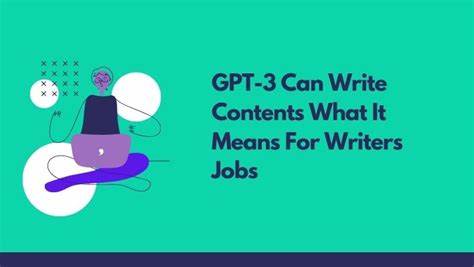
In the rapidly evolving world of digital content, AI has taken center stage, and GPT-3 stands as a groundbreaking advancement. This AI language model, developed by OpenAI, is reshaping how we approach content creation. Today, we delve into the realm of AI-assisted writing to explore how to use GPT-3 for writing compelling articles, unlocking the potential of this powerful tool in your content strategy.

What is GPT-3?
GPT-3, or Generative Pre-trained Transformer 3, represents the cutting edge in AI language models. It’s a tool that understands and generates human-like text, enabling it to assist in a wide range of writing tasks.
Key Features of GPT-3:
With its deep learning algorithms, GPT-3 offers remarkable language understanding and generation capabilities. It’s not just about writing content; it’s about crafting pieces that resonate with readers, all with a level of nuance and coherence that rivals human writers.

Preparing to Use GPT-3 for Article Writing:
Setting Up the Environment:
To start using GPT-3, you’ll need API access. Platforms like OpenAI provide interfaces to integrate GPT-3 into your writing process seamlessly.
Understanding Your Needs:
Identify the type of content you require. Whether it’s blogs, articles, or creative pieces, GPT-3 can be tailored to suit your specific needs and style.
Writing Articles with GPT-3:
Starting with Prompts:
Effective prompts are key. They guide GPT-3 to produce content that aligns with your goals. For instance, a prompt for a travel blog could be as specific as ‘Write a 500-word article about eco-friendly travel in Costa Rica.’
Structuring Your Article:
Organize the content generated by GPT-3 to ensure it flows logically and maintains coherence. This might involve rearranging paragraphs or adding transitional phrases.
Editing and Refining:
While GPT-3 generates high-quality content, human editing is crucial. This step involves personalizing and refining the AI-generated content to ensure it meets your standards and resonates with your audience.
Ethical Considerations and Best Practices:
Crediting and Transparency:
It’s ethical to be transparent about using AI tools like GPT-3. Acknowledging AI assistance maintains integrity and trust with your audience.
Avoiding Pitfalls:
When leveraging GPT-3 for article writing, awareness and caution are crucial. One common pitfall is over-reliance on the AI’s output, which can lead to a loss of personal touch in your content. To avoid this, use GPT-3 as an initial draft tool or a source of inspiration rather than a complete solution. Ensure that the final content reflects your unique voice and adheres to your editorial standards. Additionally, be vigilant about fact-checking and accuracy, as AI models can occasionally generate erroneous or outdated information. Balancing AI assistance with thorough human oversight will yield the best results.
Advanced Tips and Tricks:
- Personalization: Utilize GPT-3’s customization features to align its outputs with your brand’s tone and style. By fine-tuning the prompts and incorporating specific keywords and phrases, you can guide GPT-3 to produce content that closely matches your desired style.
- Iterative Feedback: GPT-3 learns from iterative feedback. Regularly review and refine the prompts and the AI’s responses to improve the quality and relevance of the content over time.
Enhancing Creativity:
GPT-3 can be a powerful tool for sparking creativity in your content creation process. Use it to generate ideas, explore different angles on a topic, or overcome writer’s block. For example, you can prompt GPT-3 to provide several different introductions for an article or to suggest various headlines. This can lead to discovering fresh perspectives and innovative approaches to familiar topics. Additionally, experimenting with different writing styles and formats can lead to more dynamic and engaging content.
Customization and Fine-tuning:
To get the most out of GPT-3, invest time in customizing and fine-tuning its output. This involves:
- Adapting the Model to Your Niche: Tailor the AI to understand the nuances of your specific industry or subject matter. Providing it with relevant examples or context can enhance its accuracy and relevance.
- Continuous Learning: Regularly update your approach based on the latest trends and feedback. As GPT-3 evolves, so should your strategies for using it.
- Experimentation: Don’t be afraid to experiment with different types of prompts and content formats. This can lead to discovering new and effective ways to engage your audience.
Conclusion:
The potential of GPT-3 in revolutionizing content creation is immense. By understanding how to effectively use GPT-3 for writing compelling articles, avoiding pitfalls, and applying advanced tips and tricks for enhancing creativity and customization, you can unlock new heights in your content strategy. Remember, the key is to view GPT-3 as a collaborative partner in your creative process, one that brings efficiency, diversity, and innovation to your writing.
